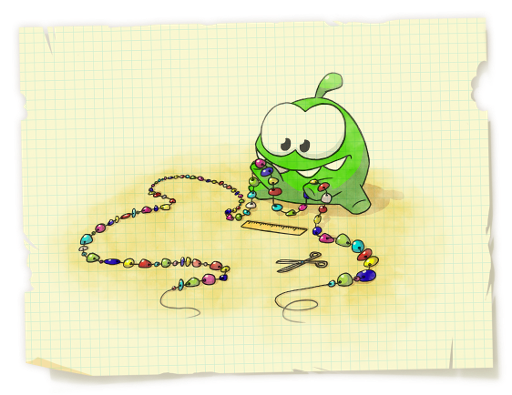#P4793. Om Nom and Necklace
Om Nom and Necklace
Om Nom and Necklace
题面翻译
已知长度为 的字符串 ,对于 的每一个前缀子串(即对于每一个 , 中从第 个字符到第 个的所有字符组成的字符串,),如果满足 的形式(、 可以为空,也可以是一个字符串, 有 个, 有 个),则请输出 ;否则输出 ,注意: 和 给定。
题目描述
One day Om Nom found a thread with beads of different colors. He decided to cut the first several beads from this thread to make a bead necklace and present it to his girlfriend Om Nelly.
 Om Nom knows that his girlfriend loves beautiful patterns. That's why he wants the beads on the necklace to form a regular pattern. A sequence of beads is regular if it can be represented as , where and are some bead sequences, " " is the concatenation of sequences, there are exactly summands in this sum, among which there are " " summands and " " summands that follow in alternating order. Om Nelly knows that her friend is an eager mathematician, so she doesn't mind if or is an empty sequence.
Om Nom knows that his girlfriend loves beautiful patterns. That's why he wants the beads on the necklace to form a regular pattern. A sequence of beads is regular if it can be represented as , where and are some bead sequences, " " is the concatenation of sequences, there are exactly summands in this sum, among which there are " " summands and " " summands that follow in alternating order. Om Nelly knows that her friend is an eager mathematician, so she doesn't mind if or is an empty sequence.
Help Om Nom determine in which ways he can cut off the first several beads from the found thread (at least one; probably, all) so that they form a regular pattern. When Om Nom cuts off the beads, he doesn't change their order.
输入格式
The first line contains two integers , ( ) — the number of beads on the thread that Om Nom found and number from the definition of the regular sequence above.
The second line contains the sequence of lowercase Latin letters that represent the colors of the beads. Each color corresponds to a single letter.
输出格式
Print a string consisting of zeroes and ones. Position ( ) must contain either number one if the first beads on the thread form a regular sequence, or a zero otherwise.
样例 #1
样例输入 #1
7 2
bcabcab
样例输出 #1
0000011
样例 #2
样例输入 #2
21 2
ababaababaababaababaa
样例输出 #2
000110000111111000011
提示
In the first sample test a regular sequence is both a sequence of the first 6 beads (we can take "", "bca"), and a sequence of the first 7 beads (we can take "b", "ca").
In the second sample test, for example, a sequence of the first 13 beads is regular, if we take "aba", "ba".

